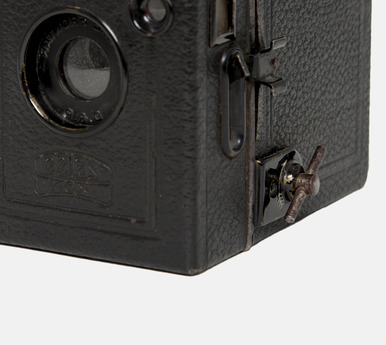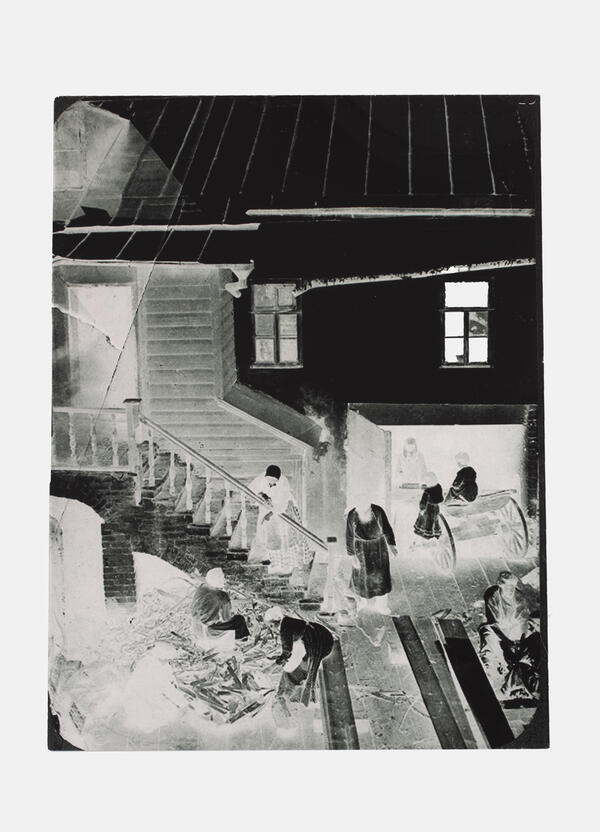The ambrotype photographic process was one of the few photographic techniques that allowed a positive image to be produced directly onto the photographic material. The process was no different from making a glass negative using the wet plate collodion process (where negatives are created using glass plates, coated with a photosensitive mixture), the difference being that the ambrotype was intended to be viewed by reflected rather than transmitted light.
Some photographers were attentive enough to notice that even on ordinary film, still used by some today, a negative image can look like a positive one when viewed from the emulsion side against a dark background. This effect was integrated by backing the plate with black velvet or coating the back side of the plate with black varnish. Sometimes the emulsion was poured on a special dark glass, which was used to work on shadow areas.
The developer was specially modified to obtain a lighter tone of silver in the highlights. The technology was patented by the American photographer James Cutting in 1854. The term ambrotype was chosen because of the high durability of the photographs: another glass was glued on top of the emulsion, completely isolating the image from atmospheric gasses.
The term “ambrotype” was derived from the Ancient Greek words “ambrotos” meaning immortal, which, according to contemporaries, was characteristic of photographs of this type, and “typos” meaning impression. When compared to the rapidly fading albumen photographic prints of those years, ambrotypes seemed indeed eternal.



